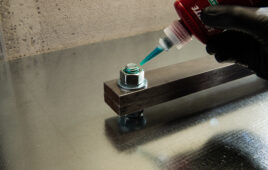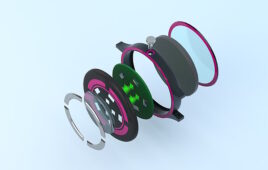Written by Julie Miller

There are several types of adhesive available with different classifications (such as structural, semi-structural, or non-structural), depending on the application.
Engineers are increasingly relying on adhesives as an alternative to mechanical fasteners for certain applications. Adhesives offer several advantages including a comparatively lighter weight of the completed assembly, the need for fewer individual components, and faster production.
Additionally, adhesives offer the ability to join dissimilar substrates. However, choosing the correct formulation is critical.
Adhesive products are categorized by load-carrying capacity. Structural adhesives demonstrate a load-carrying capacity of greater than 1000 pound-force per square inch (psi) while non-structural adhesives demonstrate a load-carrying capacity of less than 1000 psi.
A third category, semi-structural adhesives, represents products that might offer relatively high load-bearing or relatively long-term adhesion but with other possible limitations.
Semi-structural adhesives are strong, but many cannot maintain their load-bearing support continuously or for long periods without deformation or failure. These adhesives might be used for short-term or temporary attachments, such as keeping substrates in place in preparation for a subsequent process.
Recent advancements in bonding technology have given rise to higher-performance products that can withstand greater environmental exposure, for example, or product formulations that are easier to apply.
The chemistry of the semi-structural products overlaps with their structural and non-structural counterparts, such as pressure-sensitive and contact adhesives, hot melts, polyurethanes, and other polymers.
Beyond load-carrying capacity, certain variables can be considered when choosing a semi-structural adhesive:
Storage and handling. Some products might have limitations for their shelf life around the shop or their working life during application. Adhesives might be repositionable with varying degrees of tackiness, while others offer short setting times, calling for immediate attachment of substrates.
Adhesion application. Adhesives might require the application of heat to set the bond. Additional time, processes, or equipment might be needed.
Cost. It’s important to select an adhesive that meets the requirements of the design, but overall costs should also include labor or possible downtime while an adhesive application sets.
Aesthetics. Engineers should consider how the applied adhesive might appear in the final assembly. With some products, creep is possible, causing the adhesive to be visible beyond the substrate.





Tell Us What You Think!